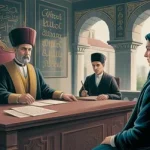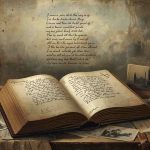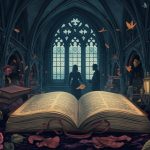Have you ever sat down to brainstorm gothic literature ideas, only to feel stuck staring at a blank page? You know the vibe you want—dark castles, eerie secrets, tragic characters—but somehow, the right sparks just don’t come. It can feel frustrating when your imagination doesn’t match the chilling atmosphere you’re trying to create. Charlotte Perkins Gilman’s The Yellow Wallpaper shows how Gothic Literature ideas can explore haunted spaces, psychological horror, and hidden fears. If you’ve ever struggled to spark dark, eerie, and mysterious story themes, this guide will help you uncover fresh inspiration to bring your Gothic imagination to life.
That’s exactly why this blog is here—to give you fresh and inspiring gothic literature ideas that actually work. Whether you’re writing a story, planning an essay, or just curious about gothic themes, you’ll find practical inspiration and easy-to-follow insights ahead. Let’s dive in and bring that haunting, mysterious world to life.
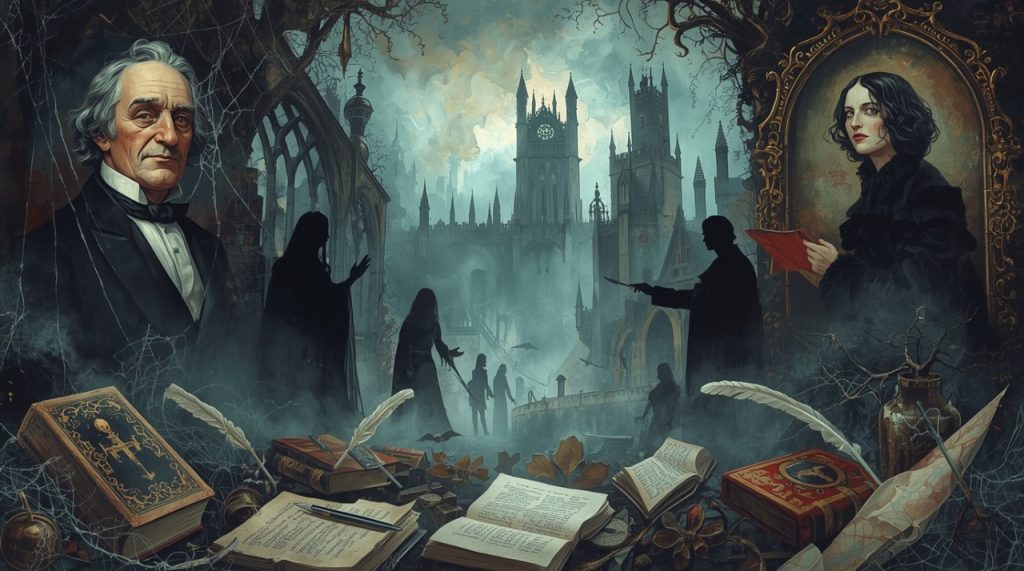
Gothic fiction in all its shabby castles, villainy and otherworldly terror is so much more than a curious antiquariat interest.
It’s a living, breathing genre, after all, one that has ever been a kind of cultural barometer, recycling and remixing itself in response to our most visceral fears for more than two and a half bloody centuries.
From there, the genre transformed from a sensationalist assault on Enlightenment rationality and into the blood and bones of mainstream horror, romantic fiction, even modern psychological thrillers.
Its fundamental quest never changes: that of going farther and darker into the human psyche, the fears that are shared and the thin, permeable line between the real and the unreal.
This journey through the evolution of Gothic literature beyond being a history is an MFA’s worth of inspiration, offering writers the timeless elements of Gothic prose and readers a new set of eyes to read the stories they love to shudder over already by.
We’ll track its development from medieval abbeys to Southern Gothic mansions, and we’ll decode the key themes, characters and symbols that you can thank for keeping this captivating genre alive and thriving today.
The Rise and Development of Gothic Fiction in the 18th Century
The Gothic was a creature of a specific cultural moment. It was the Enlightenment, stark naked in its clarity, honoring reason, harmony, science.
Then Gothic literature evolved as the swoon and superstitious diversion from terror’s absolute dominance. (!) began to revive the genre, notably with his 1764 novel The Castle of Otranto, “A Gothic Story.
That story provided the blueprint, with its haunted castle, tyrant villain, and prophesying, spooky goings-on. It proved to be a wild success — which was a sign, it turned out, that there was a massive untapped appetite for this new form of thrilling escapism.
Creative writers such as Ann Radcliffe would perfect the form inspired by Walpole. Radcliffe’s novels — including “The Mysteries of Udolpho” — created the “explained supernatural,” by which ominous events, initially thought to be the work of ghosts or spirits, are eventually shown to have been results of man-made spectacles, matters of utility in wringing suspense and dread.
This was the time during which the basic toolkit of early gothic story ideas was born – playing on terror, the journey through a richly-loaded unconscious: an innocent young and usually beautiful woman pursued forever after by a powerful older man; a terrible secret in the past; a claustrophobic, decaying edifice (usually a castle) that almost amounts to a separate character.
If we are to define convention in lit and literature values convention then you need not look further than these texts; it was the law decreed by the men that laid down the law that all of the Gotherns to come after would follow or break on purpose.
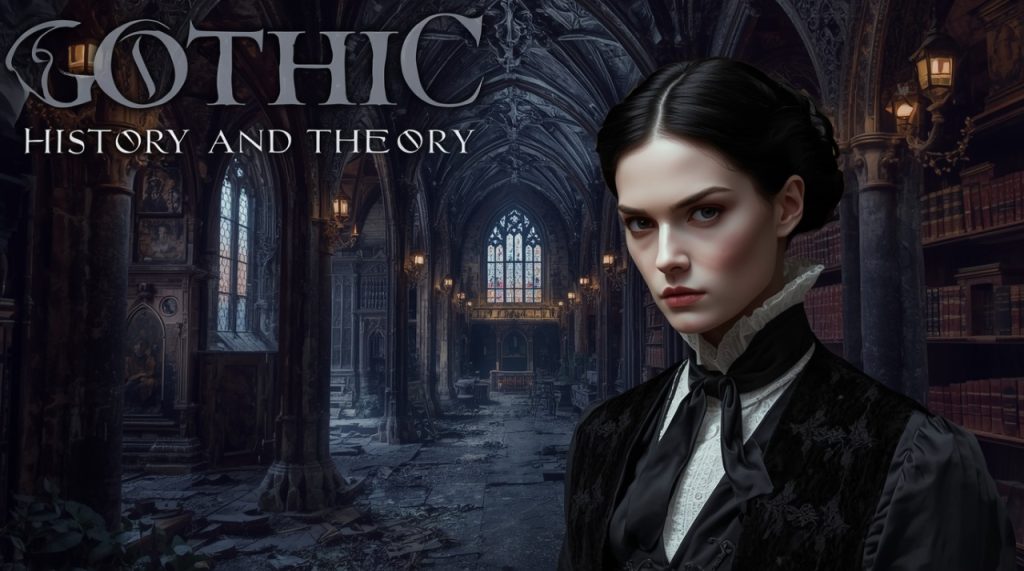
Gothic in the Nineteenth Century: History and Theory
The 19th-century was the Gothic’s adolescence, and it would splinter into yet deeper territory. Such Late-Freudian psyche-digging became melded onto the ascendant Romantic passion for emotion and personalism, leading to the more probing and complex works and practices of later years.
The Vampyre (John Polidori) and The Private Memoirs and Confessions of a Justified Sinner (James Hogg) were also popular during this time period.
This time period witnessed an enormous expansion of the gothic story material. The Gothic also moved away from a world of isolated Italian castles to the grubby streets of modern London, as we see in Charles Dickens’s urban Gothic stories and Dr Jekyll and Mr Hyde by Robert Louis Stevenson.
The internal terrain of the mind also proved to be a forerunner of horror’s exploration of the fantastic; one is led to believe that this sort of psychological horror has its origins in the gothic/terror story, and can certainly look back on the writings of Edgar Allan Poe.”
Gorgeous book with a wonderful intro to early Gothic horror, placing it in the most daunting and terrifying age of all: the industrial revolution.
Penny-dreadful villains were made ambiguous, the charismatic figure partly tortured, and the hero turned into a lonely, sensitive soul struggling with the unnatural.
The Supernatural vs Rationality
It’s a central tension of 19th-century Gothic, the tug between supernatural faith and rational explanation. Although Radcliffe had argued that her ghosts were actually material and not real, many writers turned to the genuinely supernatural to respond to a dogmatic scientific materialism.
The vampire, the Faustian deal, and the reanimated the dead monster in Frankenstein are supernatural rules the reader can’t rationalize away, forcing characters (and readers) to confront the boundaries of science and sanity.
This battle between the knowable and the feared on faith was a principal motivation behind the creation of intense gothic horror story ideas.
Isolation and Madness
This was a century of the invention of countless figures lost in profound isolation – be it physical, social or psychological – in its literature of the ‘gothic’.
Protagonists are jailed in remote castles; shunned by society for their differences; waging a war solely with their own crumbling brains. It is a theme that Edgar Allan Poe meets head on as narrators go mad and readers are left to wonder what was ever real.
By directing the horror inward in this way, a new strain of psychological complexity entered the genre and indicated that the scariest hauntings occurred not in the draughty corridors of stately homes, but deep within the labyrinth of the human mind.
Decay and Death
Whether it is bodily decay or institutional decay, the Gothic fetishizes decay. And this is not even merely a set piece; it is an undercurrent that resonates with a preoccupation with mortality, the past’s stranglehold on the present, the inevitability of — well, not so much death as final, dissolute decay after the pointlessness of life has been squeezed dry.
From the moldy images of these stories to the crumbling House of Usher itself, decay is also always a memento mori.
The kind of drawings I would’ve tried for skulls and whatnot Unfinished Awesome. I dwell upon the significance of death and ruin: there is an entire language of obscurity down there, where every fragment of broken stone and withered flower might figure the fall and decay of all things.
Gothic, 20th Century Novel: Modernism and After
The 20th century took the Gothic indoors. But global wars and psychoanalysis remade the human self and its relations to society, and the monsters of the genre also became less about what was outside us than what was inside us.
Writers including the modernists seized Gothic tropes to plumb the depths of existential angst, trauma, even the shattering of identity.
And then there is Franz Kafka’s The Metamorphosis, dower of modern Gothic the way The Monk is dower of the English Gothic, in that its central horror is that of a bizarre and inexplicable physical transformation that is of course a metaphor for alienation and absurdity.
A subgenre of Southern Gothic developed, too, with the likes of William Faulkner and Flannery O’Connor applying the classic themes of degeneracy, dysfunctional families and social hypocrisy found in the genre to country’s haunted Southern landscape — decaying plantation homes and all.
This period also saw the rise of Shirley Jackson’s “quiet horror”, particularly with the novels The Haunting of Hill House and We Have Always Lived in the Castle which specialized in psychological horror and the unreliable narrator.
What remains open, chillingly open, is the question of whether the horror is supernatural or a projection of a shattered psyche.
The 20th century made a powerful case that gothic literature’s fundamental ideas were incredibly elastic, providing a perfect language in which to articulate all of the modern fears, from the loss of the self to the present but left-behind terrors that are inscribed beneath the homely texture of everyday life.
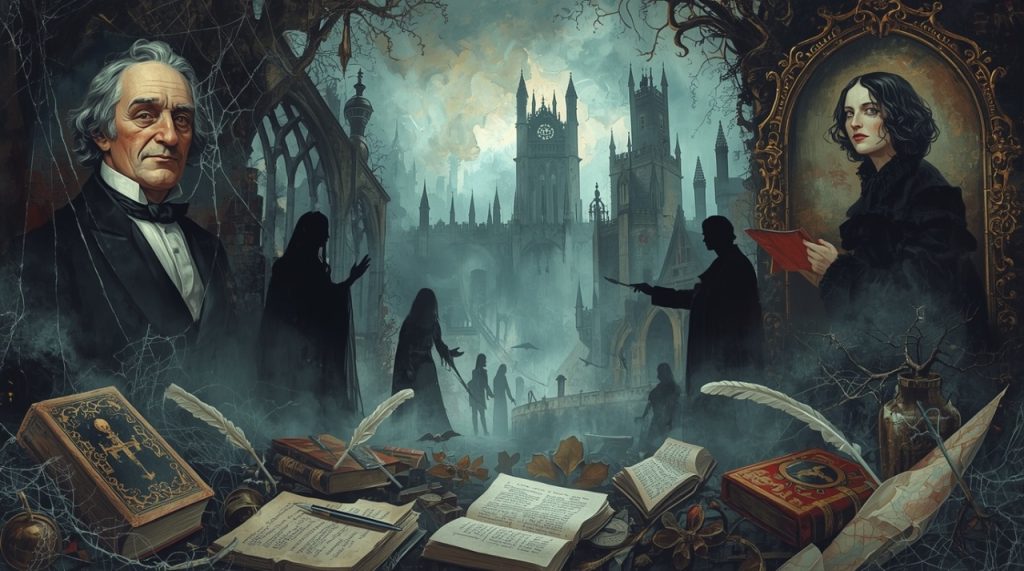
Contemporary GOthic in the 21st Century
Gothic writing is a living, breathing thing today. It’s actively breaking apart its own oldie tropes, criticizing their historical limitations while retrofitting them for a new era.
The kind of Gothic that’s very contemporary has to do with finding the voices for the voices that haven’t had voice, the marginalized, but also fears from racialization, from gendering, from colonization.
The Ballad of Black Tom by Victor LaValle A searing indictment (in novella form) of H.P. Lovecraft’s racism, and the cosmic horror sub-genre it fathered.
And Silvia Moreno-Garcia’s Mexican Gothic does that, too, takes the old trapped-in-a-mansion template and grapples with its assumptions about eugenics and colonial exploitation.
The category also mixes well with others, such as young adult fiction, romance, historical fiction and thrillers.
The result of this criss-crossing has been a flowering of new ideas in gothic fiction. Today’s writers aren’t bound by old rules, and they feel free to mix and match classical forms and modern settings, modern themes.
The age of technology, the climate crisis are emerging New Playingfields for Gothic exploration what a haunted house looks like in the age of social media, what monsters we breed through environmental neglect.
And yes, if you want to know how to write a gothic novel in this day and age, you must have the old rules at hand, if nothing else to know them well enough to credibly work to the edge of, and then if necessary well beyond, all of them.
Main Aspects on the Conception of Gothic Literature
It is true that there have been some changes, but when speaking about Gothic, few central themes are common for most types of Gothic.
One, the Past Haunts the Present: be it in the guise of a real, live ghost; a generations-spanning family curse; or a long-smoldering secret that erupts to the surface. It’s a wonderful narrative engine: Characters are forced to confront the sins of history.
This omnipresence of Confinement and Imprisonment: the literal (dungeons, attics, far-flung estates) and the figurative (madness, circumscription, trauma). This is what establishes that claustrophobic feeling you get from a good crime novel.
Another, older, theme is that of the Uncanny and the Sublime — the horror which flows from terrifying beauty, the uncanny of a landscape whipped by storms, which transmogrifies into a witching-force or monstrous fabrication.
Given this sense, characters can be brought back down to earth again, remember how unimportant they are.
Finally, there’s the Taboo and Transgression theme – Gothic stories are frequently concerned with breaking some unspeakable barrier (either moral, scientific, or supernatural) and then having to face the horrible aftermath.
These are strong staples to generate strong gothic writing ideas that root down into the tradition.
The lasting popularity of Gothic literature
Gothic literature is so easy to overlook that its impact quite literally can be invisible, part of the fibers of our storytelling DNA.
The tropes it revolves around are the foundation of the entire horror genre, from slasher movies to survival video games.
The broody, um, goth, complex villain is the living forebear of every antihero and relateable monster in the modern era. And beyond that, the intense emotion, the atmospheric setting and the inner drama at the core of the Gothic were woven into romance, mystery and fantasy.
There is no such fantasy concept as “world-building” that does not owe itself in some fashion to the careful construction of moody, immersive settings found in the Gothic.
In addition, the Gothic provided a lexicon to explore psychological states well before the more formal advent of psychoanalysis.
Its lexicon of doubles, thwarted desires and haunted minds prefigured Freudian and Jungian concepts. The Gothic, in short, taught us how to tell stories of fear, anxiety and traumatization.
It has given us a toolkit — a vocabulary of shadows, of decay and the grotesque — in which to articulate those portions of the human-than-human that reason alone is inadequate to define, and that guarantees its ideas can remain freshly minted — in the realm of the gothic novel.
Conclusion
From the vengeful spirits of The Castle of Otranto to today’s monsters, feeding on our dark science fiction magazine, the gothic tale remains powerful, whether it be subtle, like the much-honored work of Henry James, or more direct and vile like Lovecraft or the ripping-pages-out savagery you can turn to in our current age.
“Not just scares, never has been, but a profound grappling with dark in and out. Each period has formed the Gothic in the image of its fears—whether those are of reason unmoored, the monstrous conclave of industry, the grotesque indigestion of the mind, or the obscenities of the past.
This growth does not appear to be slowing down: Younger generations of writers continue to find new power in its dark mystique. Its classic themes are updated to eternity, proof that the well of gothic literature ideas is deep and not even close to dry.
Yet as old as that is, it is fresh and it is impinging on us: It still lances us toward the gloom, for us to perceive whatever is there in that darkness.
FAQs
A Byronic hero-villain: charismatic, intelligent, morally flawed, often tragic—both disturbing and sympathetic (e.g., Mr. Rochester, Lord Ruthven).
Dark, stormy, and unsettling—thunder, fog, eerie calm—mirroring the characters’ turmoil and foreshadowing doom.
A historian uncovers dark secrets in a family estate.
An archivist finds disturbing journals in a library.
A team restoring an old theater is haunted by a forgotten play.
Gothic villains are complex, often tied to the hero, charming yet tortured, driven by obsession or weakness—more human than purely evil.

